Beautiful varieties of heuchera for your garden
| Content:
|
Heuchera is a colorful perennial from the Saxifraga family with luxuriously colored leathery leaves.Thanks to many years of work by breeders, the plant has transformed from an ordinary green bush with bell-shaped flowers into a popular garden crop that can decorate and transform a wide variety of areas. Landscape designers consider heuchera to be the highlight of any style and an essential component in landscaping.
|
The varieties known today were bred from three types of heuchera: American, blood red and hairy. |
The main feature of the heuchera bush and its difference from other representatives of the flora are smooth, curly or corrugated (depending on the variety) leaf plates, which can change their color several times throughout the year. The variety of their colors and shades is amazing - yellow, green, red, orange, burgundy, brown, pink, purple and even black.
On the surface there are small dots or spots of a different color, various patterns and veins of a contrasting shade. Peduncles with small flowers rise above the dense crown of decorative foliage. Inflorescences - panicles are pink, white, cream and red. For all its luxury, heuchera is undemanding in cultivation and care. The culture unites approximately sixty species, and each species has more than a dozen varieties and hybrids.
Heuchera varieties for the Moscow region
Prince
|
The Prince variety is characterized by fast growth, disease resistance and high decorative value. |
The corrugated sheet plates are colored burgundy-violet on one side and purple-red on the other. During hot, dry periods with high temperatures and direct sunlight, the leaves turn bronze-green.
- The height of the lush bush is about thirty centimeters, the diameter is up to forty centimeters.
- It blooms with cream-colored paniculate inflorescences in May–July. The height of the inflorescences is ten centimeters.
- Prefers to grow in open areas with diffused lighting, with loose, well-drained soil that is neutral in composition. The culture does not like excess moisture.
- It can withstand frosts of up to thirty-four degrees under a thick (ten to fifteen centimeters) layer of fallen leaves, peat or sawdust. Can be grown throughout Russia.
Heuchera flowers and leaves are used to make bouquets and plant arrangements.
Mars
|
Photo of Heuchera Mars |
At the beginning of the season, the young, slightly wavy leaves are brown-red with a slight pink tint and burgundy or purple veins. Subsequently, large leaf plates acquire a silvery-smoky color, and the dark veining becomes more expressive.
- The bush does not exceed twenty to thirty centimeters in width and height.
- Heuchera blooms for two months - from May to July with white flowers.
- For planting, it is recommended to choose semi-shaded areas without stagnant water. The bush does not like direct sunlight and dense shade, excess organic matter and soil with a high level of acidity.
- Prolonged thaws negatively affect the decorativeness of plants, but they can withstand frosts of up to thirty-five degrees under a thick layer of snow. During snowless periods, the bushes are covered with dry soil or peat.
The perennial bush has strong immunity and increased endurance. It can be grown outdoors and in containers.
Champagne
|
An unusual and attractive variety of heuchera changes the color of its leaves depending on weather conditions and lighting in the area. |
In spring, the leaf blades have pink and peach hues, in mid-summer they are yellow or orange, and with the arrival of autumn they turn golden and light brown. Translucent veins stand out against the background of delicate pastel colors.
- Height - from thirty to forty, width - up to fifty centimeters.
- The flowering period of heuchera lasts for seven to eight weeks and falls in June – August. Beautiful bell-shaped flowers are located on tall dark burgundy stalks.
- For planting, you need to choose places in light partial shade. During the midday hours, from about twelve to fifteen o'clock, the plants must be shaded. For this purpose, bushes are planted near tall trees, whose dense crown in the middle of the day will protect the plants from the scorching rays of the sun.
- With mulching and hilling, heuchera winters well in the Moscow region and can withstand the most severe frosts.
The variety retains all its decorative qualities from April to November.
Penelope
|
The unpretentious frost-resistant variety practically does not get sick and is rarely affected by pests. |
The leaves are colored on one side in coral, orange, peach and apricot shades, on the other – in dark pink tones. As the season progresses, the color becomes deeper and more saturated.
- A low, lush and compact bush grows up to fifteen centimeters in height and up to forty centimeters in width.
- Small creamy-white flowers appear on the bushes in June and bloom for two to two and a half months. The height of the inflorescences is up to thirty centimeters.
- Light shade or partial shade is an ideal planting location. The soil should be light, without excess moisture, neutral or slightly alkaline in composition.
- Winter hardiness is high.This variety of heuchera can be grown in the Moscow region and the middle zone.
Heucheras look great in single and group plantings, in a corner of the garden, in the center of a lawn, on the shore of an artificial pond, or on an alpine hill. This variety can be grown in large pots and containers.
Paris
|
Photo of Heuchera Paris A vigorous, fast-growing variety that easily survives dry and frosty periods and is not affected by pests and diseases. |
The bush attracts attention with its mint-silver leaf blades with dark green veins.
- A low plant, up to twenty centimeters in height, grows thirty-five centimeters in width. Peduncles grow up to thirty-five to forty centimeters.
- Heuchera blooms twice a season - in early summer and early autumn. Inflorescences - panicles consist of many small “bells” of coral and red shades.
- Prefers to grow on loose and light fertile soils with reliable drainage. Does not tolerate stagnant soil moisture or direct sunlight.
- It survives frosts well down to thirty-four degrees. Young bushes are covered with agrofibre or a thick layer of leaves.
The red coral bush looks great on a green lawn or against other plants in a contrasting shade. It remains decorative from early spring to late autumn.
Berry Marmelade
|
This variety, popular among landscape designers, is used to decorate a site and decorate problematic and empty areas. |
The bush is distinguished by large wavy leaves with a glossy surface, painted in red, purple and burgundy-black shades. The leathery leaf plates seem to be covered with a light silvery veil.
- The height and width of the crop are approximately the same - from thirty-five to forty centimeters, peduncles - about thirty centimeters.
- Inconspicuous small flowers in beige-pinkish tones appear in mid-June and delight the eye until August.
- To plant heuchera, you need to choose well-drained and fertilized soil, light and loose in structure. The ideal place is openwork shade under the crowns of trees and tall bushes. Bright sun can leave burns on the leaves.
- High winter hardiness allows you to tolerate frosts down to forty degrees. Feels great in the Moscow region and middle zone
In a flower bed and flower garden, heuchera will go well with irises, hostas, bells, and ornamental grasses.
Beautiful varieties of heuchera
Georgia Peach
|
A bright and beautiful variety of heuchera with exquisite rounded-toothed leaves in peach, light brown and orange tones in the summer, on the surface there is a spectacular silver pattern. |
In spring, the leaf blades are pinkish in color, and in autumn they add shades of red, purple and burgundy. In temperate climates the plant becomes evergreen.
- The average height of an adult bush is thirty-five centimeters, diameter is about sixty centimeters. Such splendor is achieved thanks to large leaf plates, the length of which reaches twenty centimeters.
- Heuchera begins to bloom at the end of May and ends after two to two and a half months. The flowers consist of ruffled creamy white petals.
- Plants thrive in partial shade, on moderately moist, fertile soils with a loose structure.
- Withstands frosts up to twenty-five degrees, needs shelter for the winter.
To preserve the root system in winter, it is necessary to mulch the bases of the bushes with a thick layer of peat, sawdust or fallen leaves. It is not recommended to cut off the above-ground part for the winter; it gives the plant all the necessary nutrients.
Milan
|
The American hybrid variety is distinguished by its vitality, unpretentiousness and durability. |
A dense spherical bush consists of a large number of stems and small-sized leaves in pink-red and silver tones with burgundy veins.
- The height of the plant is thirty, the width is about fifty centimeters.
- Lace panicles of small pink flowers appear in May and bloom until September.
- The ideal site for planting would be a semi-shaded place without stagnant water, with light, nutritious soil.
- The variety tolerates even the harsh Siberian winter. It is recommended to mulch the root part.
The bushes look good against the background of coniferous vegetation and next to crops of contrasting colors. The high decorative value of heuchera does not decrease until the first frost.
Shanghai
|
A rare, long-flowering evergreen variety with showy silver-violet leaves. |
Dark veins stand out on the smooth surface of the leaf blades. The peculiarity of the variety is its rapid growth, high decorativeness and resistance to all types of diseases.
- The average height of the bush is from thirty to forty centimeters, width is about thirty centimeters.
- For two to three months, heuchera blooms with small pink and creamy white flowers. The beginning of flowering is May, June.
- Bushes can be planted in open sunny areas and in partial shade on fertile soil with moderate moisture and deep groundwater.
- High resistance to frost, but young plants are recommended to be mulched or covered with agrofibre for the winter.
In case of heavy rainfall with sharp gusts of wind, the inflorescences may not withstand such pressure, so this point must be taken into account when choosing a planting site.
Tiramisu
|
A very beautiful and spectacular two-color variety that changes the color of the leaves three times - from spring to autumn. |
Young spring leaves are dark red with a yellow edge. In summer, the leaf blades become silver-gray. Closer to autumn, the bush is again in dark red and yellow shades.
- An adult plant grows up to thirty centimeters in height and width. A lush rosette of leaves makes the bush dense and dense.
- Creamy-yellow inflorescences - panicles - rise above the crown from July to September.
- Crops can be planted in a flower bed or in a container. The growing site should be in light partial shade on loose soil without stagnant water, with a neutral reaction and high-quality drainage.
- Adult plants tolerate frosts up to thirty degrees and do not need protective shelter. It is recommended to cover young bushes with dry soil or humus for the winter.
Cut heuchera leaves retain their decorative properties for three to four weeks (in a container with water), so they can be used when making bouquets.
Berry smoothie
|
A bright, memorable variety that attracts attention with pink, violet and purple colors. |
These leaf colors change throughout the season. The leaf blades are dense in structure, with a patterned surface. The crops do not get sick and are only in isolated cases affected by pests.
- The dimensions of a neat rosette of leaves with noticeable veins are about thirty centimeters in height and up to forty-five centimeters in diameter.
- From the second half of May until the end of summer, flower stalks with inconspicuous beige flowers rise above the bush.
- Areas with openwork shade are an ideal place for planting. The soil should be light, drained, fertilized.
- The variety can withstand frosts up to thirty-four degrees.
Plants are used for group and single plantings, as well as for cutting.
Red varieties
Paprika
|
The photo shows red Heuchera Paprika. |
A bush with large wavy leaf plates that, as they grow, change their color from yellow and orange to cherry, wine and burgundy shades. The light veins stand out effectively. This low variety of heuchera grows very quickly and practically does not get sick.
- The height of the bush rarely exceeds twenty centimeters, the width of the crown is about forty centimeters.
- It begins to bloom in the second half of May. For two months, creamy panicles of small flowers rise above the cap of leaves.
- Heuchera of this variety feels excellent both in the sun and in partial shade. When preparing for planting, the soil is fed with humus or compost and drained.
- Without shelter it can withstand frosts from twenty-eight to thirty-five degrees.
Landscape designers recommend using Paprika near an artificial pond, on an alpine hill, in rocky gardens and to frame a flower bed or flower garden. It looks great in containers and large pots on the site.
Palace Purple
|
The variety of American origin is a spherical bush with maple-like carved leaf plates of a dark burgundy hue on one side and purple-red on the other. |
In hot summers they turn bronze-green, and in autumn they turn red-brown. Heuchera does not shed its leaves for the winter, but retains them under a blanket of snow until spring.
- The crown width is about half a meter, the height is up to thirty centimeters.
- Fluffy creamy-white inflorescences on peduncles about fifty centimeters high appear in early June and persist for two months.
- Prefers to grow on nutritious, slightly alkaline or neutral soils, with good drainage and moderate humidity, in a semi-shaded area.
- The variety easily tolerates frosts down to thirty to thirty-four degrees.
Used for cutting, as well as for growing in containers, on lawns, in ridges, in mixborders, in rock gardens.
Cherry cola
|
Heuchera Cherry Cola. The reddest variety with medium-sized, wavy, rounded leaves that can change color three times a season. |
From dark orange the leaves turn first to red and then to burgundy. The culture does not like direct sunlight and insufficient watering. High decorativeness lasts from early spring to late autumn.
- The low shrub reaches twenty to twenty-five centimeters in height. The width of an adult plant is about thirty-five centimeters.
- Inflorescences of small bell-shaped flowers rise above the bushes in May–July. Small flowers are painted in bright red, pale red or burgundy shades.
- A good planting site is under the canopy of tall trees and shrubs. Plants prefer light, fertile soils, good drainage, and a moderate amount of organic fertilizer.
- It tolerates low temperatures well, but in regions with frosts of more than thirty degrees, shelter for the winter will be required in the form of a thick layer of fallen leaves or peat.
The variety will fit perfectly into any landscape and will become the highlight of a flower bed or plant composition.
Yellow varieties
Cassandra (Kassandra)
|
A low-growing variety of French origin with large yellow and orange leaves and a wavy edge. |
Great for shady areas. It is used in mixed and single-species plantings, on lawns and alpine hills, along ponds and next to the gazebo, in container growing.
- The volume of an adult bush is about fifty centimeters, height – up to thirty centimeters.
- Modest cream flowers on tall peduncles appear in June – July.
- The variety is not afraid of direct sun rays, but prefers to grow in semi-shaded areas with small portions of sunlight in the morning and evening hours. Soil requirements are low acidity, drainage, fertility and moderate moisture.
- Heuchera needs shelter for the winter at temperatures below twenty-five degrees below zero.
The hybrid was created by crossing two varieties - Mocha and Caramel.
Coffee Bean
|
Photo of Heuchera Coffee bean A hybrid variety of Dutch origin with autumn colored leaf blades. |
The leaves are medium sized, ruffled and slightly rounded. Not afraid of drought and frost, resistant to diseases and pests. Suitable for cutting and growing in containers.
- A low plant does not exceed twenty to thirty centimeters. The width of the bush is about forty centimeters.
- Beautiful flowering can be observed throughout the summer, starting in June.
- Prefers to grow in open and slightly shaded areas, under tree canopies, along buildings and hedges. Loves light and loose soils with a sufficient amount of nutritional components, neutral or slightly alkaline in composition.
- Withstands frosts up to twenty-five to thirty degrees. Young bushes must be covered with leaves or sawdust.
Caramel
|
A low-growing, dome-shaped variety with golden-red and caramel-colored leaves. |
During very high summer temperatures, the leaf blades turn light brown.
- The heuchera bush grows up to thirty centimeters in height and up to fifty centimeters in diameter.
- In June - July, active flowering of heuchera begins with small pinkish flowers, collected in inflorescence panicles, on peduncles about half a meter high.
- Plants best show their decorative potential in partial shade, in areas with reliable protection from strong winds, and on light, fertile soils.
- The variety is not recommended for harsh northern regions.
With the arrival of autumn cold weather, there is no need to cut off the above-ground part of the bush, as it provides shelter and protection for the root part during the cold months.
Electra
|
A hybrid variety of American origin with golden or bright yellow leaves and red veins on a smooth surface. |
The bush holds its shape well thanks to thick and short petioles and does not fall apart as the leaf mass grows. It is recommended to replant the plant every four to five years.
- The height of an adult crop is up to forty centimeters, the width of the crown is about thirty centimeters.
- It begins to bloom in May or early June with small white flowers.
- Prefers areas with well-fertilized soil, light and loose in structure, neutral or slightly alkaline in composition.
- High frost resistance allows you not to freeze out at minus levels of thirty-five degrees.
The variety goes well with coniferous crops, as well as annuals and perennials. It looks great in company with irises, geraniums, and primroses.
Renoir
|
Heuchera Renoir A charming French perennial with large, rounded yellow leaves with a serrated edge and dark burgundy veins. |
The compact bush does not reduce its decorative value until the arrival of real autumn-winter cold weather. It is highly resistant to viral and infectious diseases.
- The diameter of the crown and the height of the plant are about forty centimeters.
- Small bright pink bells soar on tall peduncles from June to August.
- The soil at the planting site should be light, well permeable to water and air. To ensure good permeability, coarse sand or small pebbles are added to the ground. The variety prefers semi-shaded places near tall trees, under the crown of which you can hide from direct sunlight.
- Without shelter, heuchera overwinters at a temperature of minus thirty-four degrees.
The rapidly growing bush is recommended to be replanted every three to four years.
New varieties of heuchera
Obsidian
|
Heuchera Obsidian A spectacular and slightly capricious variety when grown, with unusually dark foliage in burgundy and black shades. |
The color of the leaf plates does not change even when exposed to direct sunlight.
- A beautiful and neat bush reaches twenty-five to thirty centimeters in height and about half a meter in width.
- Heuchera begins to bloom in July. Light delicate inflorescences consist of many small bell-shaped flowers.
- Can grow in open sunny areas and under tree canopies in open shade. Prefers moist soil with good drainage and adequate nutrition. Does not like stagnant water and drought.
- Winter hardiness is high. Mature bushes do not need shelter.
Buttered Rum
|
Cream rum A bright, attractive, evergreen, low-growing variety that changes color several times from spring to late autumn. |
Large leaves can be yellow and orange, caramel and orange, pinkish and red, copper and burgundy.
- A modest bush about fifteen to twenty centimeters high grows thirty-five to forty centimeters in width.
- Small snow-white flowers on peduncles thirty-five centimeters high begin to hover above the lush bush in May - June. Flowering lasts two to two and a half months.
- It is recommended to plant crops in light shade, in cool areas with fertile soil, good drainage and deep groundwater.
- Young plants are covered with leaves, sawdust or agrofibre. Mature bushes can withstand even Siberian frosts.
The variety is used for group and single plantings. It coexists and looks great with other types of heuchera, as well as with conifers and flowering perennials of contrasting color.
Grape soda
|
A beautiful variety with wide pink or purple leaf blades and a light silvery finish. |
With the arrival of autumn cold weather, the color of the leaves changes to light or dark purple. The plants are characterized by long flowering and high decorative value throughout the year.
- The width of the crown is twice the height of the bush.The average height is about thirty, and the width is about fifty-five centimeters.
- From May to August, the already beautiful bush dresses up in pink or light purple inflorescences - panicles. The height of the pubescent peduncles is up to forty-five centimeters.
- Comfortable conditions for full growth are a semi-shaded area, drained fertile soil without stagnant water.
- Heuchera needs additional shelter only if the thermometer drops below thirty degrees.
Crops are used for landscaping, decorating unsightly places, for cutting and arranging bouquets, and for container growing.
Don't forget to read:
Zipper
|
Low-growing groundcover variety with rapid growth of leaf mass. |
Throughout the season, the leaves play with all the bright and warm shades. They are colored yellow, orange, golden, amber, purple, pinkish-burgundy, and peach. On the underside, the leaf plates are in a pink palette.
- The spreading of the bush is up to forty-five centimeters, the average height is thirty centimeters.
- In May–June, the crops begin to bloom with inconspicuous, small, creamy-white flowers. The flowering period lasts more than eight weeks.
- It is preferable to plant plants in light partial shade, on fertilized soils with good permeability of moisture and air.
- This heuchera overwinters with additional shelter.
Do not miss:
Sashay
|
In the photo of Heuchera Sasha This unpretentious modern perennial is a ground cover plant and has already gained well-deserved popularity among landscape designers. |
The bush stands out from other varieties with shiny olive-green leaf blades with a purple color on the underside and a corrugated edge.
- The average height and width of the plant, as well as the height of the peduncle, is about thirty to thirty-five centimeters.
- Heuchera begins to bloom in May - July (depending on climate and weather). It blooms with white delicate flowers collected in paniculate inflorescences.
- This unique variety can fully develop in sunny and semi-shade areas. The leaves are not afraid of sunburn. The main requirement for the growing site is the absence of stagnation of water and fertility.
- Needs additional shelter at temperatures below twenty-five degrees below zero.
Among the variety of varieties, everyone is sure to find their own heuchera, suitable for a specific region, climate, garden plot and personal preferences.
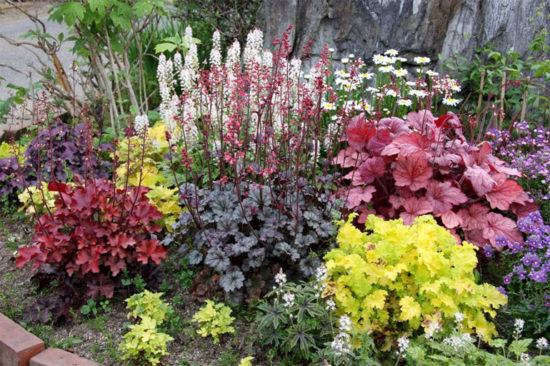
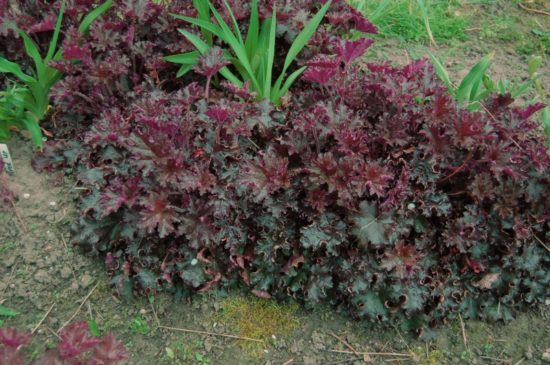

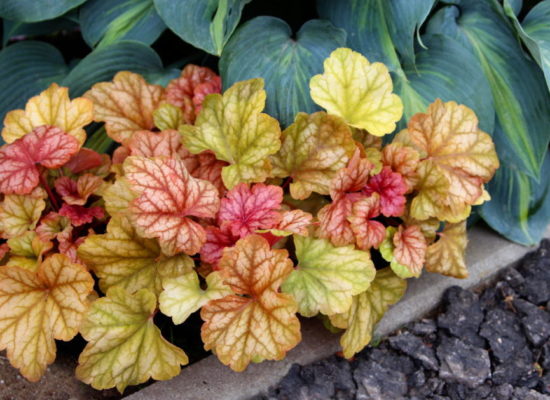


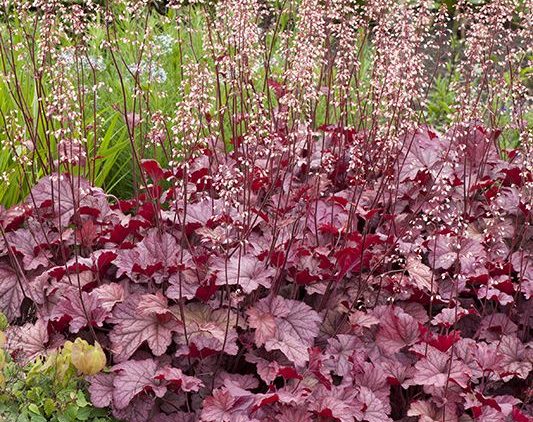
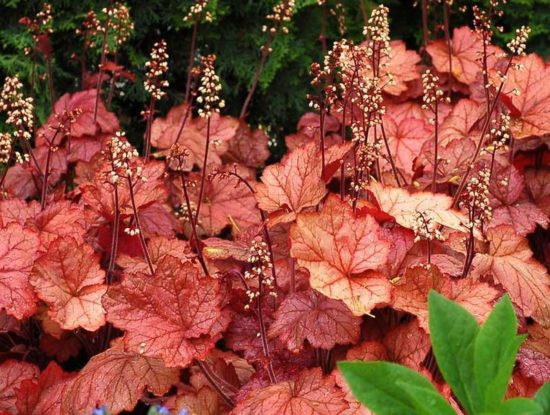
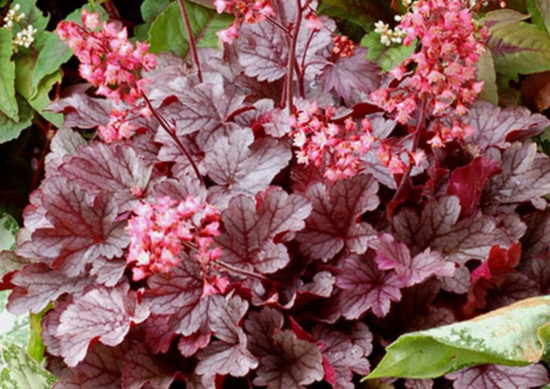
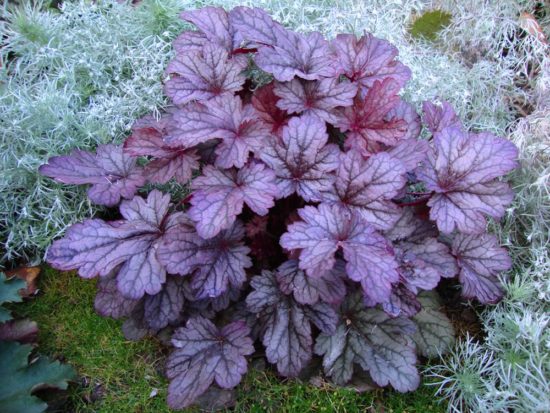
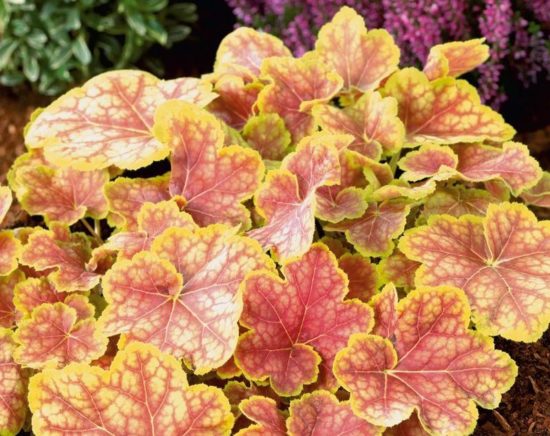
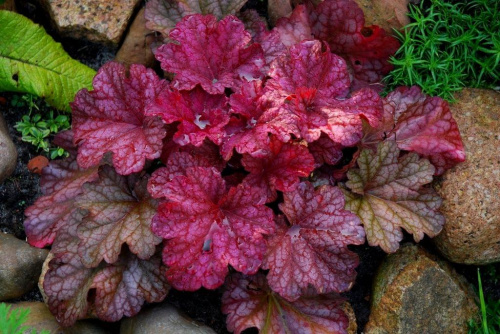
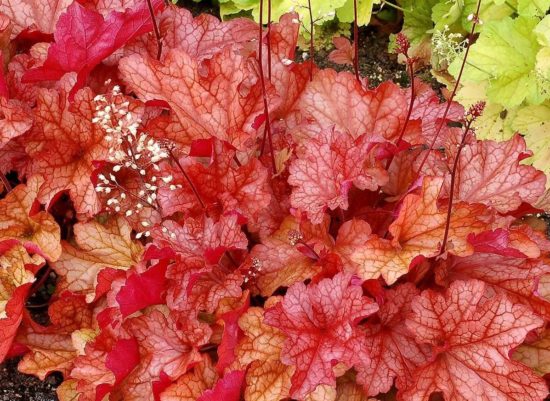
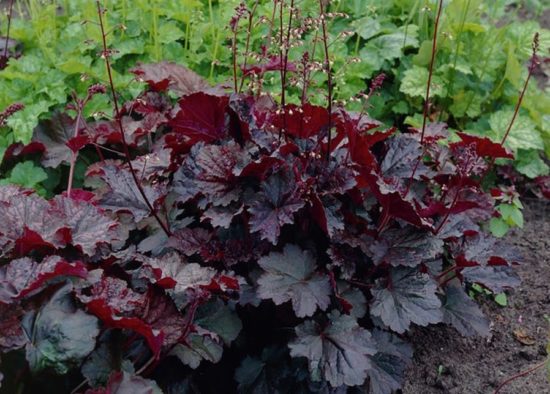
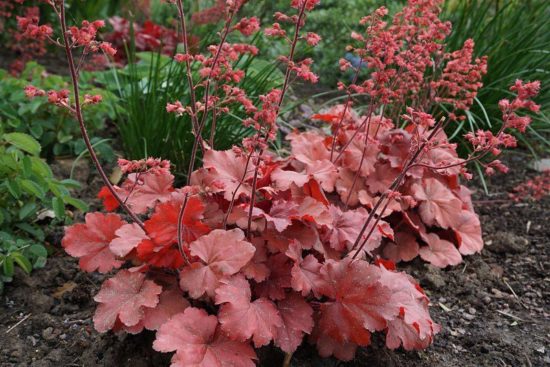
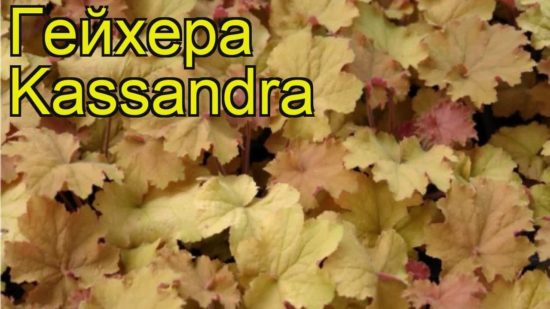
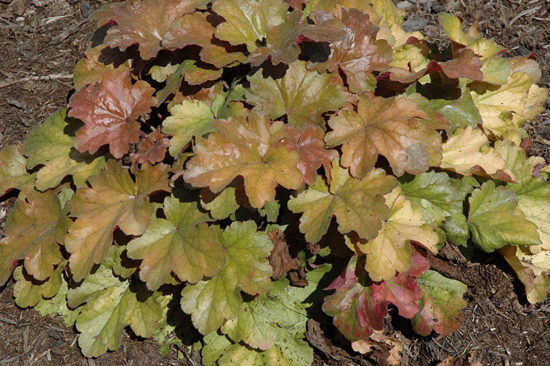
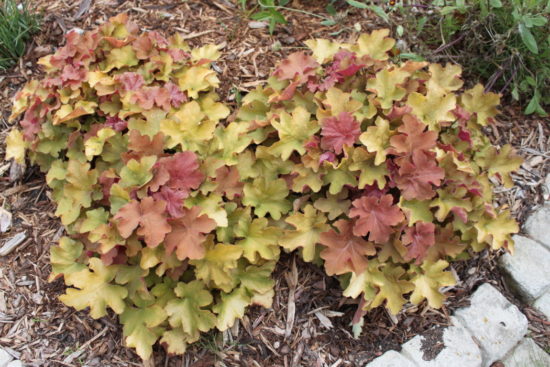

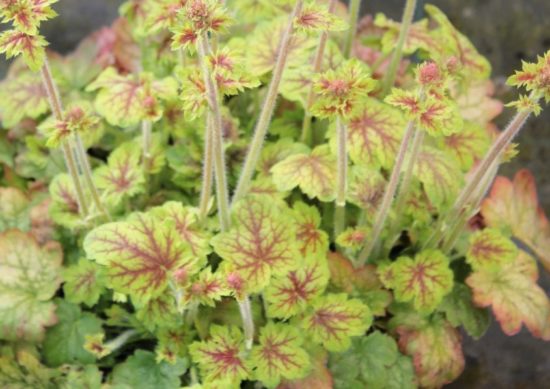
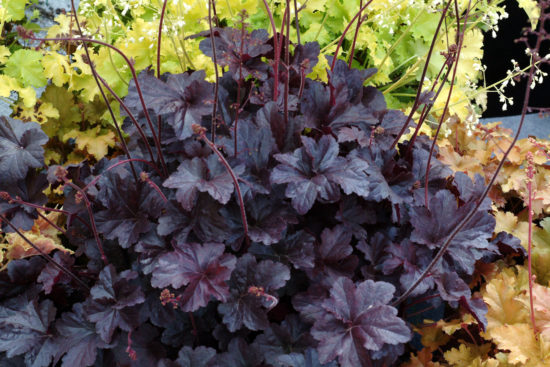
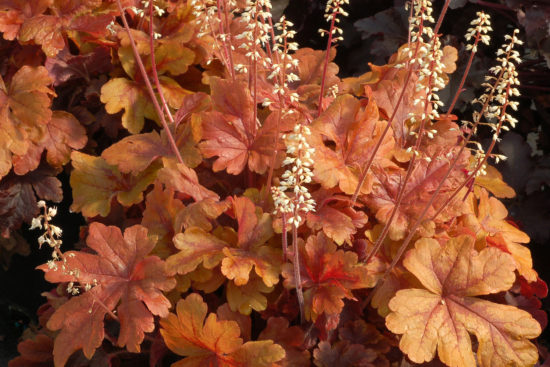
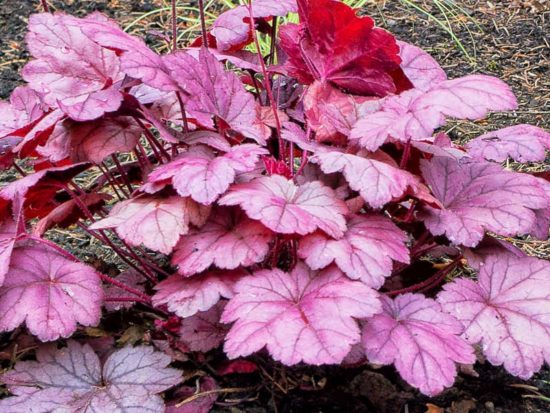
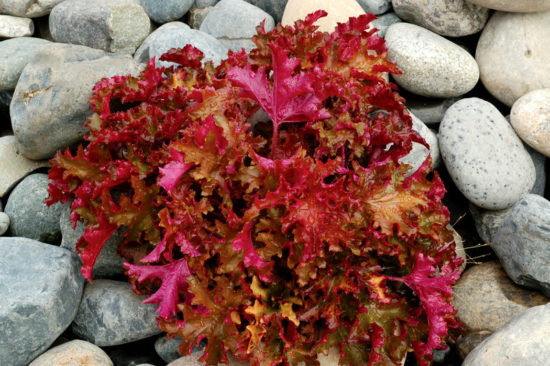
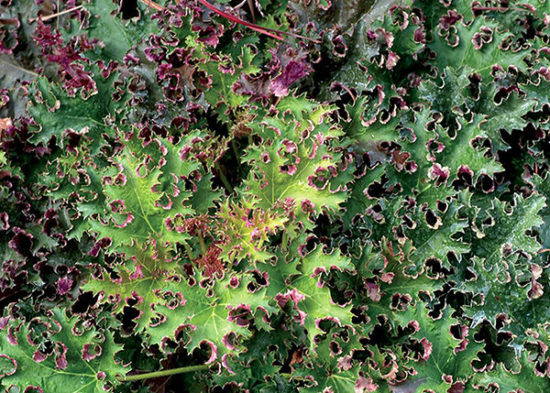

 CUCUMBERS NEVER GET SICK, I'VE BEEN USING ONLY THIS FOR 40 YEARS! I SHARE A SECRET WITH YOU, CUCUMBERS ARE LIKE THE PICTURE!
CUCUMBERS NEVER GET SICK, I'VE BEEN USING ONLY THIS FOR 40 YEARS! I SHARE A SECRET WITH YOU, CUCUMBERS ARE LIKE THE PICTURE! You can dig a bucket of potatoes from each bush. Do you think these are fairy tales? Watch the video
You can dig a bucket of potatoes from each bush. Do you think these are fairy tales? Watch the video
 How our fellow gardeners work in Korea. There is a lot to learn and just fun to watch.
How our fellow gardeners work in Korea. There is a lot to learn and just fun to watch. Eye trainer. The author claims that with daily viewing, vision is restored. They don't charge money for views.
Eye trainer. The author claims that with daily viewing, vision is restored. They don't charge money for views. A 3-ingredient cake recipe in 30 minutes is better than Napoleon. Simple and very tasty.
A 3-ingredient cake recipe in 30 minutes is better than Napoleon. Simple and very tasty. Therapeutic exercises for cervical osteochondrosis. A complete set of exercises.
Therapeutic exercises for cervical osteochondrosis. A complete set of exercises. Which indoor plants match your zodiac sign?
Which indoor plants match your zodiac sign? What about them? Excursion to German dachas.
What about them? Excursion to German dachas.